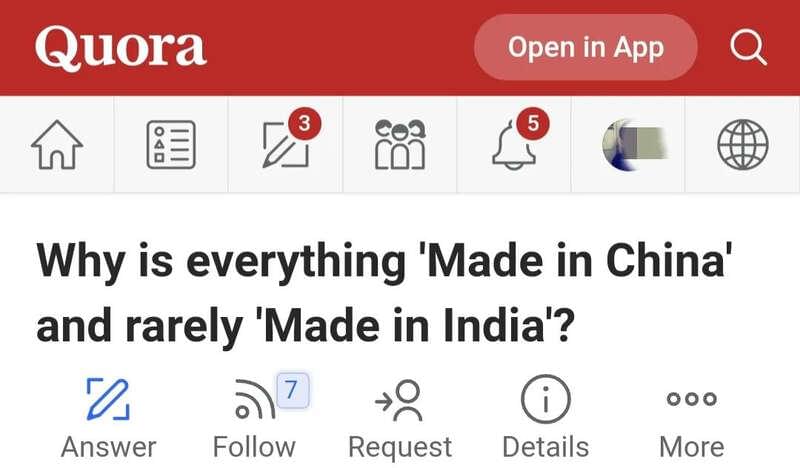
问题:为什么中国制造可以,印度制造就不行?

印度工程专家古普塔的回答
As an entrepreneur, I think I am fully qualified to answer this question.
作为一个创业爱好者,我认为我完全有资格回答这个问题。
Let me first take a brief look at China's achievements in the early days of its founding, and how China has shown fascinating economic growth:
让我先简略浏览一下中国建立初期的成就,中国究竟是如何展现出令人着迷的经济增长的:
The first generation of leaders with Chairman Mao Zedong at the core and his successors led the Chinese people on the right path and developed China's core strength.
以毛泽东主席为核心的第一代领导人和他的继承者带领中国人民走上了正确的道路,发展出了中国的核心力量。
• they have increased the literacy rate from 10%-12% to 84%-87%, improving the national quality and knowledge level;
• 他们将识字率从10%-12%提高到84%-87%,提高了国民素质和知识水平;
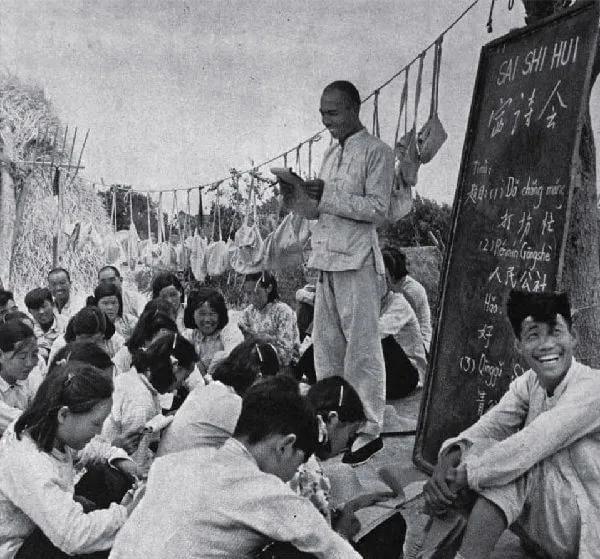
• vaccination coverage ranged from 3% to 94-96%, reducing the mortality of various diseases;
• 疫苗接种率从3%覆盖到94-96%,降低了各种疾病的致死率;
• medical insurance covers almost 99% of the population;
• 医疗保险覆盖了几乎99%的人口;
• pay attention to skill development and lay the foundation for the skill education system;
• 注重技能发展,为技能教育体系奠定基础;
• reform the tax system;
• 进行税务制度改革;
• reform the labor system;
• 进行劳动制度改革;
• relax restrictions on foreign direct investment, and shift the development of raw materials from domestic mining to overseas procurement;
• 放宽外商直接投资限制,原材料开发由境内开采转向境外采购;
• create a positive entrepreneurial spirit and atmosphere in the whole society;
• 在全社会营造积极向上的创业精神和氛围;
What did modi do for the "made in India" movement?
看看莫迪为“印度制造”运动做了什么?
• marketing the slogan of "made in India", but there is no practical action;
• high consumption tax (nearly two years after the introduction of the Ministry of information industry);
• 高额的消费税(信息产业部推出近2年后);
• the reform of the labor system has stagnated, and the rights and interests of workers have not been guaranteed (so far);
• 劳动制度改革停滞不前,工人权益得不到保障(到目前为止);
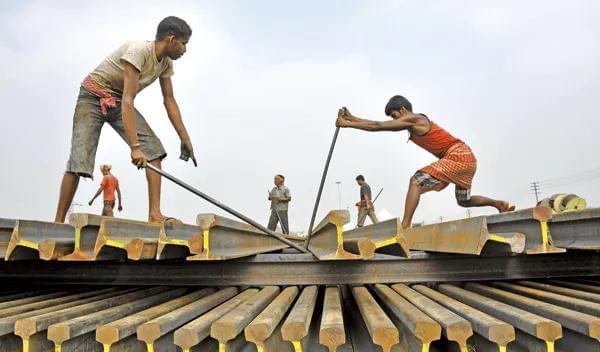
• no tax reform (goods and services tax is part of the tax reform. A businessman must fill out 37 forms every year to carry out business, and the cumbersome administrative process discourages many entrepreneurs;
• 无税务改革(商品及服务税是税务改革的一部分,一名商人要开展业务必须每年填写37份表格,繁冗的行政流程让许多创业者望而却步;
• the restrictions on foreign direct investment have been relaxed to some extent, but there are limitations in some areas;
• 一定程度上放宽了外商直接投资限制,然而,在某些领域存在局限性;
Rome was not built in a day. We should learn from China. Only when the government has a supportive policy model can capital have the courage to invest and start business. First of all, "India should learn to make", and then "made in India" can be successful.
罗马不是一天建成的,我们应该向中国学习,政府端有支持的政策模式,资本才会有勇气投资兴业,首先“印度应该学会制造”,然后“印度制造”才有可能会成功。

印度专家图沙尔•卡蒂拉的回答
"Made in India" is not as simple as printing labels and assembling some parts.
“印度制造”并不像打印标签和组装某些零件那么简单。
The establishment of the Indian manufacturing initiative (MII) has two goals: revitalize India's manufacturing industry, make it internationally competitive, and make us a new manufacturing center, especially in sectors where we have comparative advantages. For example, with the improvement of China's income level and the growth of demand for industrial upgrading, it has begun to withdraw from the labor-intensive textile and footwear industry, and India has considerable room for development in this field.
印度制造计划(MiI)的成立有两个目标:振兴印度的制造业,使其具有国际竞争力,让我们成为一个新的制造业中心,特别是在我们有比较优势的部门,例如,随着中国收入水平的提高和产业升级的需求增长,它已经开始撤出劳动密集型的纺织和鞋类行业,而印度在这一领域有着相当大的发展空间。
India's efforts and results have been mixed. The success of the policy is the result of the joint action of many factors. If a model succeeds in one sector, the Indian government tends to research and skillfully replicate it in other fields. For example, in the textile industry, the government announced an export incentive plan of 600million euros in 2016 to develop man-made fiber garments and other garments.
印度的努力和结果好坏参半。政策成功是由多种因素共同作用的结果,如果一个模型在一个部门成功,印度政府倾向于在其他领域进行研究和巧妙复制,比如在纺织行业,政府于2016年宣布了一项6亿欧元的出口激励计划,用于发展人造纤维成衣和其他成衣。
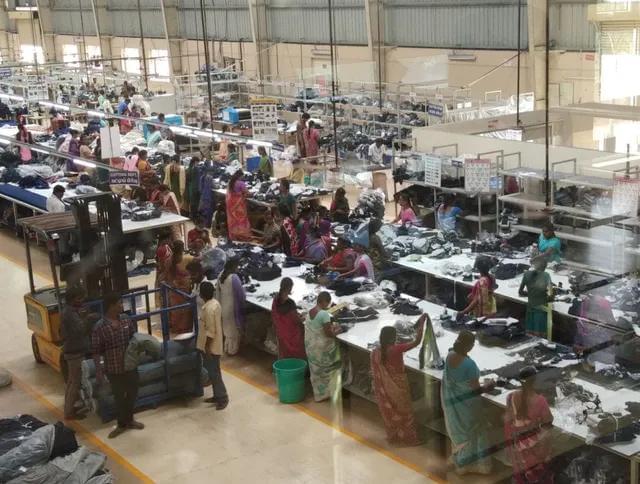
This is a long road, and we need patience. Not only the government, the attitude of ordinary Indians should also be changed to create an appropriate environment for foreigners to consider investing in India.
这是一条漫长的路,我们需要耐心。不仅仅是政府,普通印度人的态度也应该改变,为外国人考虑投资印度创造适当的环境。
1. The logistics cost of manufacturing industry in India is 15%-18%, while that in other countries is only 6%-8% on average. We need more freight channels and wider roads, and develop natural ports to drive more industries.
1、印度制造业物流成本为15%-18%,其他国家仅平均为6%-8%,我们需要更多的货运通道和更宽的道路,开发天然良港来带动更多的产业。
2. Our Indian driving habits are very bad, and no one abides by the traffic lane discipline, which is very important for rapid transportation in the industrial supply chain. The supply chain is so bad, why can foreign companies come to India, and how can domestic companies develop?
2、我们印度人的驾驶习惯非常糟糕,没有人遵守交通车道纪律,这对工业供应链中的快速运输非常重要,供应链这么糟糕,外国公司凭什么会来印度,国内的公司凭什么能够发展起来?
3. Oil is the blood of manufacturing industry. India has less natural oil resources, with crude oil imports accounting for 80%. This is not the case in China or other industrial countries. China can produce 48% of its domestic consumption of oil.
3、石油是制造工业的血液。印度的自然石油资源较少,原油进口比例占80%,中国或其他工业国家的情况就并非如此,中国可以生产国内用量48%的石油。
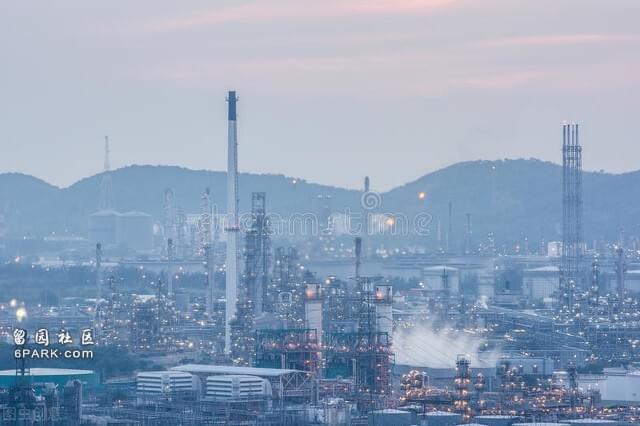
a. In the 1974 oil crisis, when the oil price doubled, we were completely finished. This is a terrible lesson;
a、 1974年石油危机,油价翻了一番,我们就彻底完蛋了,这是个可怕的教训;
b. In 2018, the United States once again imposed sanctions on oil suppliers to promote their oil exports. The current U.S. government will definitely not get Indian support in the next election.
b、 2018年,由于美国再次对石油供应商实施制裁,以促进其石油出口。下届选举现任美国政府肯定不会得到印度人的支持。
4. We are not good for nothing. The relevant departments in India are seriously studying the semiconductor and chip manufacturing industry, but we only have professional knowledge in chip design, not manufacturing. 98% of our chips are imported from other countries, most of them from China. We urgently need to realize the independence of the chip industry as soon as possible. The first step of the government is to introduce assembly lines into India, which will be the driving force and reason for chip manufacturers and investors to invest in India.
4、我们也并非一无是处,印度相关部门正在认真研究半导体和芯片制造业,可我们只有芯片设计方面的专业知识,没有制造方面的专业知识,我们98%的芯片从其他国家进口,其中大部分来自中国。我们迫切需要尽快实现芯片产业的独立自主。政府的第一步是将装配线引入印度,这将是芯片制造商投资者成为在印度投资的动力和理由。

加拿大专家马丁•雷托的回答
India is a country lacking in energy. Without the treatment and distribution of energy, transportation and water resources, various factories will be greatly reduced. Energy must be imported. In order to pay for energy, India must become a net exporter and earn hard currency. After all, most countries do not accept rupee payment. Japan, South Korea and China have made progress by becoming net exporters. The United States is an exception. As the US dollar is a global trading currency, it can directly trigger US dollar bills to buy goods. The United States does not need foreign exchange.
印度是一个能源匮乏的国家,如果没有能源、交通、水资源的处理和分配,各种工厂将大大减少。能源必须进口,为了支付能源费用,印度必须成为净出口国并赚取硬通货,毕竟大多数国家不接受卢比付款。日本、韩国、中国通过成为净出口国而取得进展。美国是个例外,由于美元是全球贸易货币,它可以直接引发美元钞票购买商品,美国不需要外汇。
With this in mind, most foreign direct investment will not solve this problem. In fact, in the long run, it will greatly aggravate the problem. Foreign enterprises hope to recover their investment and profits within a few years. Therefore, FDI is actually a kind of high interest loan. Any foreign direct investment that cannot make India self-sufficient in manufacturing will be extremely destructive.
考虑到这一点,大多数外国直接投资将无法解决这个问题,事实上,从长远来看,这将在很大程度上加剧问题。外国企业希望在几年内收回投资和利润。因此,外国直接投资实际上是一种高息贷款。任何不能使印度在制造业实现自给自足的外国直接投资都将具有极大的破坏性。

In the long run, as the company repatriates its investment and profits back to its domestic headquarters, this will deplete India's foreign exchange. Successful Asian companies have learned how to extract and develop manufacturing processes from foreign countries, and have increased their own technological research and development efforts. I don't see similar efforts in Indians. On the contrary, Indian culture and environment have been avoiding it for a long time, and it is difficult to catch up, because the development of automation is weakening the advantage of reducing Indian labor costs.
从长远来看,随着公司将投资和利润汇回国内总部,这将耗尽印度的外汇。成功的亚洲公司学习了如何从外国提取和开发制造工艺,并增加了自己的技术研发努力,我在印度人身上没有看到类似的努力。相反,印度文化和环境长期以来一直在避免其发生,很难赶上,因为自动化的发展正在削弱降低印度劳动力成本的优势。
On the other hand, the backward industrial infrastructure and material resources mean that entrepreneurs have little opportunity to make profits and maintain business. This is a dilemma. Without proper infrastructure, there will be no development and increase in exports. Without exports, energy imports will be restricted and infrastructure will remain poor. To get rid of this "Catch-22" problem, we need extremely smart political and industrial leaders.
另一方面,落后的工业基础设施和物质资源意味着企业家几乎没有机会盈利和维持经营。这是一个两难的局面。没有适当的基础设施,就不会有发展和增加出口。如果没有出口,能源进口将受到限制,基础设施将仍然很差。要想摆脱这个“第二十二条军规”的问题,需要极为精明的政治和工业领导人。
There are some obvious ways to improve the foreign exchange situation, which do not require great technology, but only discipline and firm determination. India has a large number of poor people, many of whom are starving and homeless. However, no one tries to keep the streets clean and attract foreign tourists. Security issues make India a poor reputation as a tourist destination. Originally, India had 1million or more troops, most of which were idle in the absence of war, which should make India very safe for tourists, but the opposite is true. In India, street cleaning should be more economical and cheaper, because compared with developed countries, labor costs are insignificant, but India is the dirtiest.
有一些明显的改善外汇状况的方法,不需要伟大的技术,只需要纪律和坚定的决心。印度有大量穷人,许多人正在挨饿和无家可归。然而,没有人努力使街道干净,吸引外国游客,安全问题使印度作为旅游目的地的声誉很差。本来印度有100万人或更多的军队,其中大部分在没有战争的情况下处于闲置状态,这应该使印度对游客来说非常安全,可事实相反。在印度,清理街道应该更经济,成本更低,因为与发达国家相比,劳动力成本微不足道,但印度是最脏的。

Due to the lack of storage space, India wastes a lot of food and agricultural products. It is reported that 30% of the products rot in the rain or are damaged by rodents. Building a warehouse should be able to recover most of the funds without spending a lot of foreign exchange. This can significantly increase GDP, reduce the cost of living, and may earn or save foreign exchange.
由于缺乏储存空间,印度浪费了大量粮食和农产品。据报道,30%的产品在雨中腐烂或被啮齿动物破坏。建造仓库应该可以收回大部分资金,而不需要花费大量外汇。这可以显著增加国内生产总值,降低生活成本,并可能赚取或节省外汇。
We can't even do these basic things. How can we compare with "made in China"?
连这些最基本的事情我们都做不到,怎么和“中国制造”比?
Therefore, the temporary solution is to concentrate on benefiting from India's surplus labor force. Technology development should be the focus of efforts, and India should say no to all foreign investment and even domestic capital that failed to improve manufacturing know-how.
因此,临时解决方案是集中精力从印度的剩余劳动力中获益。技术开发应该是重点努力的方向,印度应该对所有没能提升制造业专有技术的外国投资甚至国内资本说不。

印度企业CEO班拉吉的回答
It's funny that those who don't know how to become a manufacturing center chattered at the beginning that modi failed in the "made in India" mission. First, let's take a look at China, the world's factory. China opened its economy in 1978, 13 years earlier than India. Not many Western companies immediately queued up in China to invest in manufacturing plants and production facilities. Since 2000, China has spent nearly 20 years persuading many companies to invest in China. In fact, did you know that China joined the WTO on December 11th, 2001.
很搞笑的是,那些不知道如何成为制造业中心的人一开始就喋喋不休地说莫迪在“印度制造”任务中失败了。首先让我们看看世界工厂中国。中国在1978年开放了经济,比印度早了13年。没有多少西方公司立即在中国排队投资制造工厂和生产设施。从2000年开始,中国用了近20年的时间说服许多公司来中国投资。事实上,你知道吗,中国是在2001年12月11日才加入世贸组织。
In 2000, there was little difference between the GDP of India and China, and China was only slightly ahead. In fact, before 2002, whenever I saw any "made in China" product, it was just a small toy. Most other products, such as electronic products, had labels of "made in Japan" or "made in Korea". They also start from the foundation.
2000年,当时印度和中国的国内生产总值相差不大,中国只是略微领先。事实上,在2002年之前,每当我看到任何“中国制造”的产品,它只是小玩具,其他产品,如电子产品,大多有“日本制造”或“韩国制造”的标签。他们也是从基础做起的。
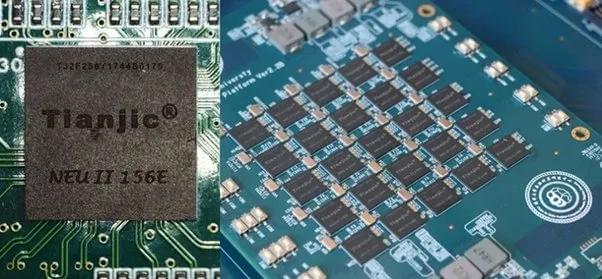
One of the most important factors for the success of the "made in India" mission is logistics. Sometimes, it takes more time to deliver products from Tamil Nadu to somewhere in North tallahan than to import from China. It is for this reason that the Bharatiya Janata Party has begun to work rapidly on the dedicated terror corridor.
“印度制造”任务成功的最重要因素之一是物流。有时,从泰米尔纳德邦向北塔拉罕某地交付产品比从中国进口要花更多的时间。正是出于这个原因,印度人民党已经开始在专用的恐怖走廊上迅速开展工作。
To become a manufacturing center, a country also needs a reliable supply chain. It is precisely because of this lack that Elon Musk is more keen than India to build a manufacturing plant in China to produce his Tesla cars. Because we have no supply chain or logistics infrastructure. In addition, don't forget the convenience of doing business and other important infrastructure, such as power connection, water supply, land acquisition for establishing factories to produce goods.
一个国家要成为制造业中心,还需要一条可靠的供应链。正是因为缺乏这些,埃隆·马斯克比印度更热衷于在中国建立制造工厂来生产他的特斯拉汽车。因为我们没有供应链或物流基础设施。除此之外,不要忘记做生意的便利性和其他重要的基础设施,如电力连接、供水、建立工厂生产商品的土地征用。
It is for this reason that the modi government is committed to all these things. India's business environment jumped from 130 to 100, up 30 places. But when modi tried to amend the land acquisition law, many fools in this country began to cry that modi was bought by capital and was undermining the interests of the people.
正是出于这个原因,莫迪政府正在致力于所有这些事情。印度的经商环境从130位跃升至100位,跃升30位。但当莫迪试图修改土地征用法时,这个国家的许多傻瓜开始哭喊莫迪被资本收买了,在破坏人民的利益。
On the one hand, people hope that "made in India" will succeed and create millions of jobs, but they do not want to achieve this goal by changing the status quo. Of course, for millions of Indians who are accustomed to freebies, everything will happen out of thin air. Modi government is making every effort to create a favorable environment, such as introducing bankruptcy law and reducing bureaucracy.
一方面,人们希望“印度制造”取得成功并创造数百万个就业机会,但不希望通过改变现状来实现这一目标。当然,对于数百万习惯免费赠品的印度人来说,一切都会凭空发生。莫迪政府正在尽一切努力营造一个有利的环境,比如引入破产法,减少官僚主义。
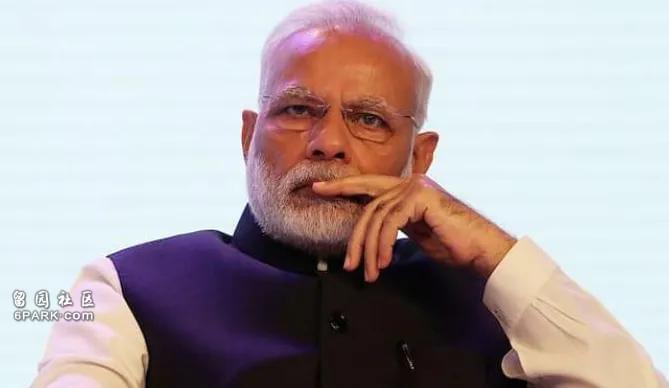
Our infrastructure will take some time to improve. This is a continuous process. We must give these companies what they don't have in China or other Southeast Asian economies and let them move their production base to India. This is not so easy. This is a very slow process. It took China 20 years to do this. We don't know how long it will take India. But "made in India" is not as completely failed as others say.
我们的基础设施需要一段时间才能改善。这是一个连续的过程。我们必须给这些公司在中国或其他东南亚经济体所没有的东西,让他们把生产基地转移到印度。这并不是那么容易。这是一个非常缓慢的过程。中国花了20年才做到这一点。我们不知道印度需要多长时间。但“印度制造”并不像其他人所说的那样完全失败。
This must be a slow start. But once it has the advantages and incentives to produce goods in India, it will accelerate its pace. We have taken a small step in assembling mobile phones, cars and other things. Wait another 10 years to make a judgment. After all, India did not become an outsourcing center overnight, did it?
这肯定是一个缓慢的开始。但一旦有了在印度生产商品的有利条件和激励措施,它就会加快步伐。我们在组装手机、汽车和其他东西方面迈出了一小步。再等10年再做出判断。毕竟,印度也不是一夜之间成为外包中心的,不是吗?

